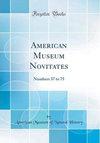Description of Two New Labeo (Labeoninae; Cyprinidae) Endemic to the Lulua River in the Democratic Republic of Congo (Kasai Ecoregion); a Hotspot of Fish Diversity in the Congo Basin
IF 1.1
3区 环境科学与生态学
Q3 BIODIVERSITY CONSERVATION
引用次数: 1
Abstract
ABSTRACT Labeo mbimbii, n. sp., and Labeo manasseeae, n. sp., two small-bodied Labeo species, are described from the lower and middle reaches of the Lulua River (Kasai ecoregion, Congo basin) in the Democratic Republic of Congo. The two new species are members of the L. forskalii species group and are genetically distinct from all other species of that clade. Morphologically they can be distinguished from central African L. forskalii group congeners except L. dhonti, L. lukulae, L. luluae, L. parvus, L. quadribarbis, and L. simpsoni in the possession of 29 or fewer (vs. 30 or more) vertebrae and from those congeners by a wider interpectoral, among other features. The two new species are endemic to the Lulua River and, although overlapping in geographical range and most meristic and morphometric measures, are readily differentiated by differing numbers of fully developed supraneural bones, predorsal vertebrae, snout morphology, and additional osteological features. The description of these two species brings the total of Labeo species endemic to the Lulua basin to three. The third endemic species, L. luluae, was previously known only from the juvenile holotype, but numerous additional specimens have now been identified. The cooccurrence of 14 Labeo species in the Lulua River, three of which are endemic, highlights this system as a hotspot of Labeo diversity in the Congo basin and across the continent.刚果民主共和国鲁鲁河(开赛生态区)特有的两种新的Labeo(Labeoninae;Cyprinidae)的描述;刚果盆地鱼类多样性热点
摘要:描述了刚果民主共和国鲁鲁河中下游(刚果盆地开赛生态区)的两种小型海狗。这两个新物种是毛喉杆菌属物种群的成员,在基因上与该分支的所有其他物种不同。从形态学上讲,它们可以与中非毛喉杆菌群同源物区分开来,除了拥有29个或更少(而不是30个或更多)脊椎的毛喉杆菌、卢卢埃毛喉杆菌,细小毛喉杆菌和四头毛喉杆菌外,还可以通过更宽的跨体等特征与这些同源物区分开。这两个新物种是鲁鲁河的特有物种,尽管在地理范围和大多数分生组织和形态测量方面重叠,但通过不同数量的完全发育的神经上骨骼、前脊椎骨、吻部形态和其他骨学特征,很容易区分。对这两个物种的描述使鲁鲁盆地特有的Labeo物种总数达到三种。第三个特有物种,L.luluae,以前只从幼年正模中知道,但现在已经鉴定出许多其他标本。卢卢瓦河共有14种Labeo物种,其中三种是特有物种,这突出表明该系统是刚果盆地和整个大陆Labeo多样性的热点。
本文章由计算机程序翻译,如有差异,请以英文原文为准。
求助全文
约1分钟内获得全文
求助全文
来源期刊

American Museum Novitates
环境科学-动物学
CiteScore
3.00
自引率
6.70%
发文量
8
审稿时长
>36 weeks
期刊介绍:
The Novitates (Latin for "new acquaintances"), published continuously and numbered consecutively since 1921, are short papers that contain descriptions of new forms and reports in zoology, paleontology, and geology.
 求助内容:
求助内容: 应助结果提醒方式:
应助结果提醒方式:


